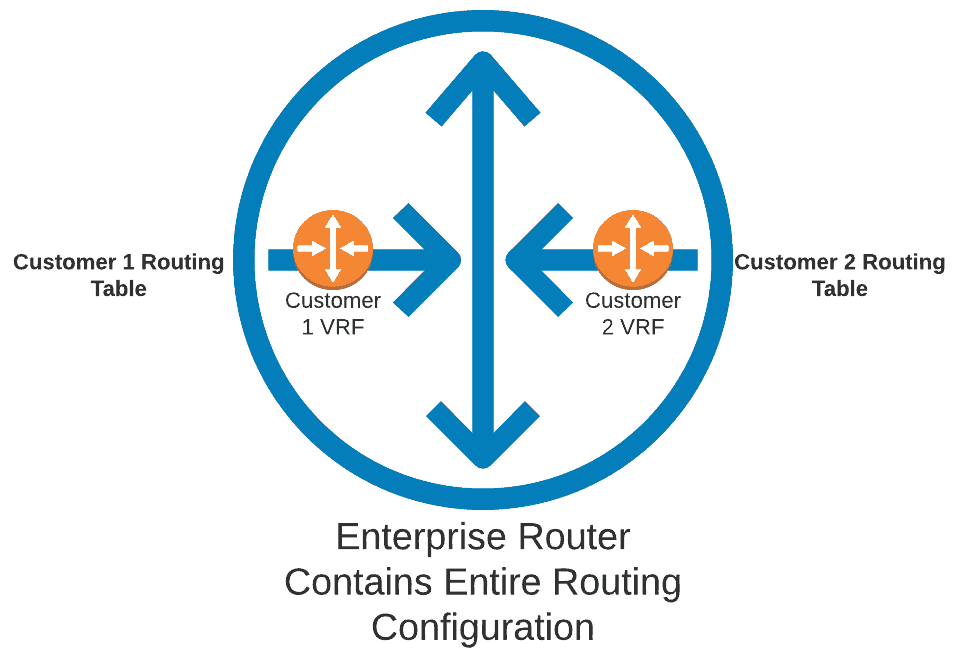Virtualization is simply creating a virtual version of something. We know that virtual machines exist, and the most common form of it is a virtual PC. It is also possible to do it with network devices via network virtualization.
We can virtualize operating systems and configure a virtual PC inside an actual PC. There is a virtual network inside that PC, and it is responsible for the sharing of software network resources. How about in the case of routers, switches, and firewalls? It is the same, and some devices enable virtualization inside them.
Network virtualization means virtual network components can mimic real-world physical hardware functions. Now we can have things like a virtual router inside a router, a virtual switch inside a switch, virtual firewalls inside a firewall, and all those networks devices can be virtualized inside a server/PC. Now we can utilize network resources efficiently by using virtual networks.
Virtual Routing and Forwarding
Let us take a look at this example of Network Virtualization. The physical network component here is the Enterprise router which contains all of the configurations. This is a usual setup with service providers when customers would like to have a private network. The network functionality of two different routers, each routing instance or Virtual Routing and Forwarding (VRF) will have its routing table.
This kind of setup is not limited to routers. Network virtualization can also happen to switches and firewalls wherein multiple virtual firewalls inside a physical firewall can have different security profiles running independently. It is used for improved security within a Local Area Network. It is the same with switches, and it can have its mac address table per single network. If you are thinking now if a computer can also act as a firewall or router, the answer is yes. You can run virtual devices on a PC/server using network virtualization software or a network virtualization platform.
Benefits of Network Virtualization
Listed below are some of the benefits of implementing virtualization in our networks.
- Network virtualization provides flexibility and reduces cost. The physical devices are reduced, so less cooling and space is consumed.
- Redundancy is being supported by having multiple physical networks on data centers by which have a virtual network running on them.
- It reduces the time to provision new network services for customers.
- Faster recovery process and improvement in security for sensitive data.
- Since this it is a virtual infrastructure, we can move and place workloads depending on the physical device’s capacity without moving a lot in the data center.
Clustering
Clustering is the process of combining hardware into a single virtual system. In a sense, this is the opposite of virtualizing one hardware to multiple virtualized networks.
Download our Free CCNA Study Guide PDF for complete notes on all the CCNA 200-301 exam topics in one book.
We recommend the Cisco CCNA Gold Bootcamp as your main CCNA training course. It’s the highest rated Cisco course online with an average rating of 4.8 from over 30,000 public reviews and is the gold standard in CCNA training:


